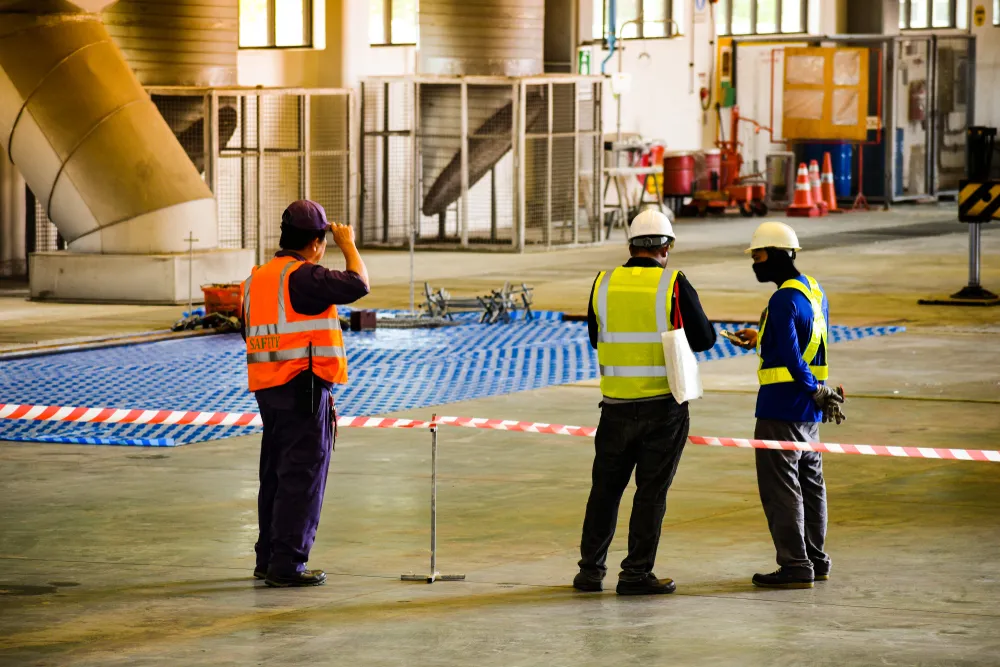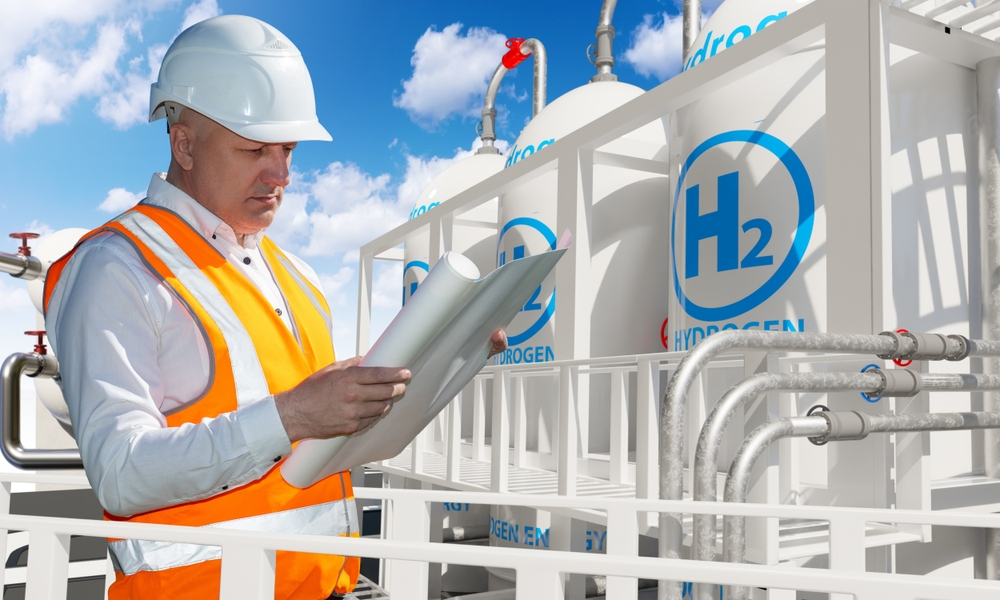The Best Strategy To Use For Roar Solutions
The Best Strategy To Use For Roar Solutions
Blog Article
The 6-Second Trick For Roar Solutions
Table of ContentsGetting My Roar Solutions To WorkThe smart Trick of Roar Solutions That Nobody is Talking AboutGetting My Roar Solutions To Work
In order to shield installations from a prospective surge an approach of evaluating and categorizing a possibly dangerous area is required. The purpose of this is to guarantee the appropriate option and installment of equipment to eventually protect against a surge and to ensure safety of life.
(https://roar-solutions.mailchimpsites.com/)
No devices should be installed where the surface area temperature level of the equipment is above the ignition temperature level of the provided threat. Below are some usual dust unsafe and their minimum ignition temperature. Coal Dirt 380C 225C Polythene 420C (melts) Methyl Cellulose 420C 320C Starch 460C 435C Flour 490C 340C Sugar 490C 460C Grain Dirt 510C 300C Phenolic Material 530C > 450C Aluminium 590C > 450C PVC 700C > 450C Residue 810C 570C The likelihood of the hazard existing in a focus high sufficient to create an ignition will vary from location to place.
In order to classify this risk an installment is separated right into areas of danger relying on the amount of time the unsafe exists. These areas are referred to as Areas. For gases and vapours and dusts and fibers there are 3 zones. Zone 0 Zone 20 A dangerous environment is very most likely to be existing and might exist for lengthy periods of time (> 1000 hours each year) or perhaps constantly Area 1 Area 21 A dangerous environment is feasible yet unlikely to be existing for extended periods of time (> 10 450 C [842 F] A category of T6 suggests the minimal ignition temperature level is > 85 C [185 F] Dangerous area electric equipment perhaps developed for use in higher ambient temperatures. This would suggested on the rating plate e.g. EExe II C T3 Ta + 60C( This suggests at 60C ambient T3 will certainly not be gone beyond) T1 T1, T2, T3, T4, T5, T6 T2 T2, T3, T4, T5, T6 T3 T3, T4, T5, T6 T4 T4, T5, T6 T5 T5, T6 T6 T6 A T Course ranking of T1 implies the optimum surface area temperature level created by the tool at 40 C is 450 C. Assuming the connected T Course and Temperature score for the devices are proper for the location, you can always use an instrument with an extra rigorous Department ranking than needed for the area. There isn't a clear response to this concern. It really does rely on the kind of equipment and what fixings require to be brought out. Tools with certain test procedures that can't be done in the area in order to achieve/maintain 3rd celebration ranking. Need to return to the factory if it is before the equipment's service. Field Repair Service By Authorised Personnel: Challenging screening may not be called for nevertheless specific procedures may need to be complied with in order for the tools to preserve its 3rd event ranking. Authorised employees need to be utilized to do the work appropriately Repair work have to be a like for like substitute. New part should be taken into consideration as a direct replacement requiring no unique screening of the equipment after the fixing is full. Each piece of equipment with a dangerous rating should be examined separately. These are described at a high level listed below, however for even more thorough information, please refer directly to the standards.
Some Known Facts About Roar Solutions.
The devices register is an extensive data source of equipment documents that includes a minimum collection of fields to recognize each product's area, technological specifications, Ex lover classification, age, and ecological data. This details is critical for tracking and handling the devices efficiently within unsafe areas. On the right here other hand, for periodic or RBI tasting assessments, the grade will be a mix of In-depth and Close evaluations. The proportion of In-depth to Shut assessments will certainly be figured out by the Tools Threat, which is assessed based upon ignition risk (the likelihood of a resource of ignition versus the possibility of a flammable atmosphere )and the harmful area category
( Area 0, 1, or 2). This variant will likewise influence the resourcing needs for job preparation. Once Great deals are defined, you can establish sampling plans based upon the sample size of each Lot, which describes the number of arbitrary tools items to be examined. To determine the required sample dimension, two facets need to be reviewed: the dimension of the Lot and the classification of assessment, which suggests the level of effort that must be used( decreased, regular, or raised )to the examination of the Whole lot. By integrating the classification of assessment with the Whole lot size, you can after that establish the proper being rejected standards for a sample, indicating the permitted variety of defective items discovered within that sample. For more details on this process, please describe the Energy Institute Standards. The IEC 60079 common recommends that the optimum period between examinations need to not go beyond three years. EEHA inspections will also be performed outside of RBI campaigns as component of set up maintenance and devices overhauls or repair work. These inspections can be attributed toward the RBI example dimensions within the affected Great deals. EEHA assessments are performed to identify mistakes in electrical devices. A weighted scoring system is important, as a solitary tool may have numerous mistakes, each with differing degrees of ignition risk. If the consolidated score of both assessments is much less than twice the fault rating, the Whole lot is regarded appropriate. If the Whole lot is still thought about undesirable, it should undergo a complete assessment or justification, which might activate more stringent evaluation methods. Accepted Lot: The sources of any kind of faults are determined. If a typical failing mode is located, additional tools may call for maintenance. Faults are categorized by extent( Safety and security, Honesty, House cleaning ), ensuring that urgent issues are evaluated and resolved immediately to mitigate any kind of effect on security or operations. The EEHA database must track and record the lifecycle of faults along with the corrective activities taken. Carrying out a robust Risk-Based Examination( RBI )technique is important for making certain conformity and safety and security in taking care of Electric Devices in Hazardous Areas( EEHA) (eeha training). Automated Mistake Rating and Lifecycle Management: Easily handle mistakes and track their lifecycle to enhance evaluation accuracy. The intro of this support for risk-based inspection further strengthens Inspectivity's position as a best-in-class service for regulative conformity, along with for any asset-centric evaluation use instance. If you are interested in discovering more, we invite you to ask for a presentation and uncover how our option can change your EEHA management processes.
See This Report on Roar Solutions

In terms of eruptive threat, a hazardous area is an atmosphere in which an eruptive environment exists (or may be expected to be existing) in quantities that call for special preventative measures for the building, installment and use of devices. hazardous area course. In this write-up we explore the obstacles faced in the workplace, the danger control actions, and the required competencies to function safely
These materials can, in specific problems, form explosive ambiences and these can have significant and terrible repercussions. Most of us are familiar with the fire triangle eliminate any one of the three elements and the fire can not happen, yet what does this mean in the context of harmful locations?
In a lot of circumstances, we can do little about the levels of oxygen airborne, yet we can have significant influence on sources of ignition, as an example electric tools. Hazardous areas are recorded on the dangerous location category illustration and are identified on-site by the triangular "EX" indication. Here, among other key information, zones are split right into three types depending upon the hazard, the probability and duration that an explosive environment will certainly exist; Zone 0 or 20 is regarded one of the most harmful and Area 2 or 22 is regarded the least.
Report this page